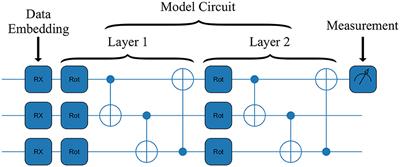Two students from the Master's in Engineering Physics at the University of Minho are trying to speed up the search for new physics.
Their names are Miguel Caçador and Gabriela Oliveira, who are optimizing methods to analyse data from CERN - the European Organization for Nuclear Research.
CERN is the world's largest particle accelerator. It has a circular tunnel 27 kilometers long and 100 meters deep, on the border between France and Switzerland.
There are 600 million proton collisions per second at CERN. All of them are analyzed by tens of thousands of scientists from all over the world.
Miguel and Gabriela propose to speed up this process by applying artificial intelligence to a quantum computer, to detect new events in physics (helping to decipher the universe) and to better understand quantum technology.
In this study, they gathered large amounts of data simulating physics events (such as proton shocks) from CERN experiments.

They then use pre-processing techniques so that they can classify the data with quantum machine learning (QML) techniques.
They focus in particular on high-energy physics and its application to search for new physics phenomena - processes not predicted by the standard model of particle physics.
"We took techniques developed in the field of quantum computing and studied their application to particle physics," said Miguel Caçador, quoted in a statement from the University of Minho sent to ZAP.
Given the task of finding a needle in a haystack, the idea is to create a model that distinguishes events coming from known physical phenomena from those that could signal something new.
In order to fairly compare classical and QML machine learning models, the scientists carried out a systematic study of traditional analysis methods of similar complexity to the quantum algorithms used.
The performance between the models was similar, which "is promising given the current state of quantum computers", says Gabriela Oliveira.




